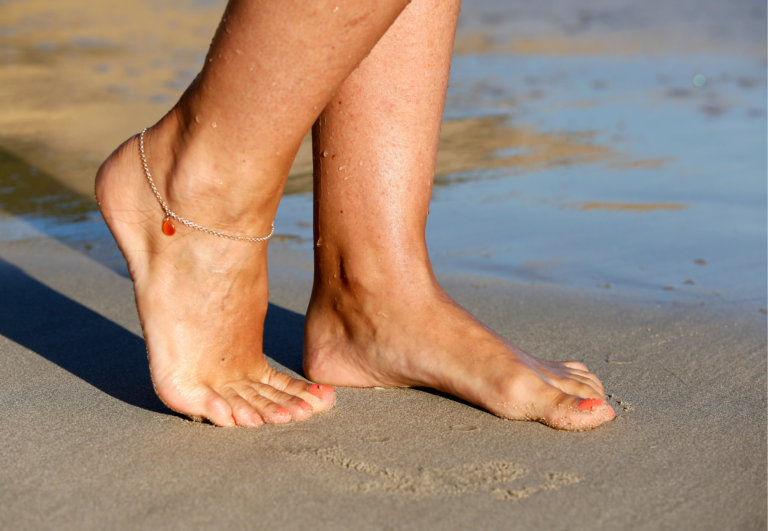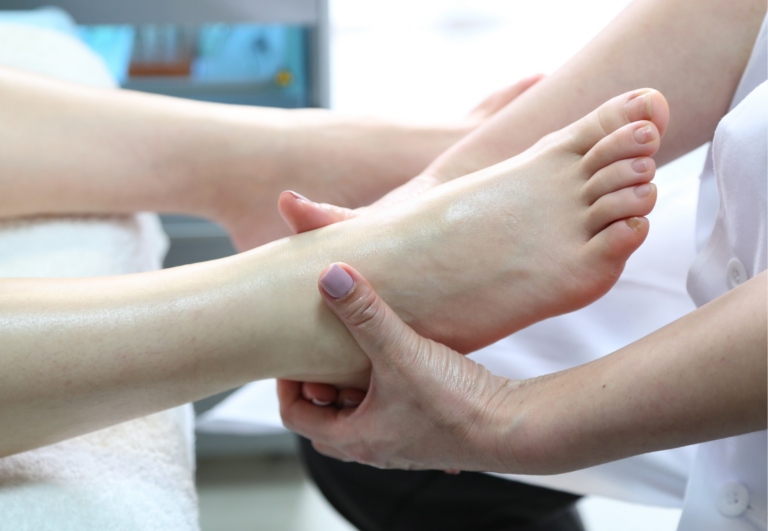Can Toe Spacers Alleviate Morton’s Neuroma Symptoms? (Potential Treatment Benefits)
I’ve found that many individuals struggling with discomfort in their feet, especially from conditions like Morton’s neuroma, turn to toe spacers as a potential solution. Morton’s neuroma causes sharp, burning pain in the ball of the foot, often between the third and fourth toes, and may feel like you’re standing on a pebble in your shoe. The pain can be quite distressing and finding relief is a high priority for those affected.
From my experience, toe spacers can be incredibly beneficial. They work by spreading the toes to their natural position, which can alleviate the pressure on the nerves that is often associated with Morton’s neuroma. This simple, non-invasive treatment can reduce symptoms and provide a measure of comfort to those suffering from this foot condition. It’s important to note, however, that while toe spacers can help with symptom relief, they are not a cure for Morton’s neuroma.
When considering toe spacers, it’s essential to select ones that fit well and are appropriate for your specific foot shape. Ill-fitting toe spacers might lead to further discomfort, so careful selection is key. For those exploring conservative treatment options, integrating toe spacers into your routine could be a significant step towards managing symptoms and improving foot health.

Role of Toe Spacers in the Treatment of Morton’s Neuroma
Toe spacers are designed to realign the toes, redistributing pressure and offering relief from pain caused by certain foot conditions, such as Morton’s neuroma. Their role in treatment is to address common elements like misalignment, pressure points, and nerve irritation by repositioning the toes into a more natural alignment.
Benefits of Toe Spacers
Toe spacers serve an important role by helping to relieve the pressure on nerves, especially the pinched nerve that is characteristic of Morton’s neuroma. By separating the toes, spacers can reduce the crowding that exacerbates nerve compression.
This reduction in pressure can not only alleviate pain but also improve overall toe function and stability. In some cases, consistent use of toe spacers may be coupled with other treatments like the use of shoe inserts or orthotic inserts to encourage recovery.
Users often notice that with toe spacers, they can continue wearing their preferred footwear—even those with a less ideal wide toe box—while managing symptoms.
- Reduction of Pressure: Toe spacers work by evenly distributing the weight and relieving pressure from the nerve.
- Alignment Correction: They help in correctly aligning the toes, potentially slowing the progression of toe deformities.
- Improved Footwear Fit: Spacers can make wearing shoes more comfortable, allowing for a better fit and reducing the risk of further irritation.
Limitations and Considerations
While toe spacers have their benefits, they are not a panacea. It is important to consider that they might not provide a complete solution for everyone. The success of toe spacers can be influenced by factors such as the severity of the foot condition, the individual’s foot structure, and consistency in use.
They should also not replace proper diagnosis and guidance from a healthcare professional—especially since incorrectly used spacers could potentially cause more harm than good. Some patients may also need to explore additional treatment options such as physical therapy, medication, or in some cases, surgery.
- Severity of Condition: The effectiveness of toe spacers can vary depending on the severity of the Morton’s neuroma or other foot issues.
- Consistency is Key: For maximum benefit, toe spacers must be used regularly and as part of a comprehensive treatment plan.
- Supplemental Treatments: They are often most effective when combined with other treatments, like recovery exercises or appropriate footwear adjustments.
What Is Morton’s Neuroma?
Morton’s neuroma is a painful condition that affects the nerves of the foot, particularly between the third and fourth toes. I’m here to guide you through an understanding of this issue, drawing from my experience with toe spacers and foot health.
Symptoms and Diagnosis
When it comes to Morton’s neuroma, you might first recognize it by a sharp, burning pain in the ball of your foot. Often, it feels like standing on a pebble in your shoe.
The discomfort may also extend to the nearby toes, with symptoms including tingling and numbness. Diagnosis usually involves a physical exam, but your doctor might order an MRI or X-Ray to rule out other causes.
Causes and Risk Factors
The development of a neuroma can be attributed to pressure, irritation, or damage to one of the foot nerves. Risk factors are inclusive but not limited to tight footwear, high heels, or repetitive stress from sports activities.
Nerves entrapped in the ball of your foot can swell and thicken, leading to the persistent pain associated with Morton’s neuroma.
Comprehensive Morton’s Neuroma Management Strategies
In addressing Morton’s neuroma, a condition that affects the nerves between the toes, comprehensive management strategies are paramount. These strategies range from simple lifestyle adjustments to more invasive medical interventions.
Lifestyle and Home Remedies
For many, the initial approach to managing foot conditions like Morton’s neuroma involves modifications in daily activities and home care. Here’s what I’ve found effective:
- Rest: Taking a break from activities that put pressure on your feet can alleviate symptoms.
- Shoe Choices: Wearing properly fitting shoes with a wide toe box can prevent compression of the toes.
- Ice: Applying ice to the affected area can reduce swelling.
- Foot Pads and Arch Support: Using metatarsal pads or arch supports can help distribute pressure more evenly.
- Exercises: Engaging in foot and toe exercises can improve strength and reduce discomfort.
Medical and Surgical Interventions
When conservative treatments don’t provide relief, more direct medical interventions might be necessary:
- Medications: Over-the-counter anti-inflammatory medication can reduce pain and inflammation.
- Steroid Injections: Steroid injections may alleviate pain by reducing inflammation around the nerve.
- Physical Therapy: Structured physical therapy programs can target foot mechanics and alleviate stress on the nerve.
- Surgery: As a last resort, decompression surgery or removal of the affected nerve can be considered.
- Ultrasound & Therapy: Sometimes, therapies like ultrasound are recommended that apply sound waves to increase circulation and reduce pain.
Each strategy aims to not only alleviate pain but also correct the underlying biomechanical issues contributing to Morton’s neuroma. It’s essential to choose interventions tailored to your specific needs.
Footwear Considerations and Modifications

In managing foot conditions like Morton’s neuroma, footwear plays a pivotal role. Appropriate shoes and orthotic solutions can alleviate pain and prevent further aggravation of the condition.
Choosing the Right Shoes
I must stress the importance of selecting proper footwear to help with Morton’s neuroma. Look for shoes with a wide toe box to minimize pressure on the toes and provide space for them to spread naturally. This can reduce tissue irritation and help control swelling.
Additionally, avoid high heels as they can force your feet into a cramped position, exacerbating forefoot issues. Opt for shoes that distribute pressure evenly across the ball of the foot.
Custom Orthotic Solutions
In some cases, over-the-counter solutions are not enough. That’s where custom orthotic solutions come in. These are shoe inserts tailored to your foot’s specific needs. They can include features such as arch support to stabilize the foot and metatarsal pads to offload pressure from the painful area. Although orthotics are not a cure, they can significantly reduce symptoms and improve foot function.
To conclude, examining your footwear and considering the use of orthotics can be key elements in addressing issues related to Morton’s neuroma. It’s an actionable step I recommend for anyone looking to find relief from this condition.
When to Seek Professional Care
If you’re experiencing persistent foot pain, particularly a sharp, burning sensation between your toes, you might be dealing with a condition known as Morton’s neuroma.
Although toe spacers can provide some relief, it’s crucial to know when to consult with a doctor for a professional evaluation.
- Persistent Pain: Despite using toe spacers, if you still feel pain after a few weeks, it’s time to book an appointment.
- Intensity of Symptoms: When symptoms escalate to the point where daily activities are affected, seeking professional care is necessary.
- Lack of Improvement: If there’s no sign of improvement with self-care measures, a doctor can provide a more comprehensive diagnosis and discuss additional treatment options.
Remember, a licensed healthcare provider can offer an accurate diagnosis and may suggest treatments, which could range from custom orthotics to surgery for severe cases. Don’t hesitate to seek help; timely intervention can significantly improve your recovery.





